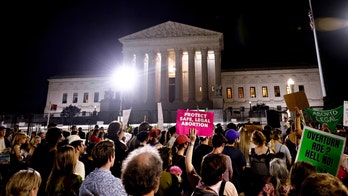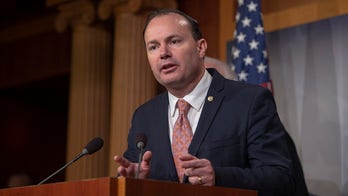Among the biggest recipients on the Department of Energy's controversial list of loans to renewable energy companies like the failed Solyndra Inc. are a number of non-U.S. firms whose big-ticket energy projects will cost taxpayers billions of dollars -- but will generate no more than a few hundred permanent U.S. jobs.
Some of the companies employ complex solar technologies that cost more than twice as much as any other land-based renewable system, including nuclear.
The huge cost and relatively low long-term employment payoff for the investments could cast doubt on the Obama administration's claims that big investments in new green technologies will lead the U.S. to innovative parity with countries like China, and also create significant long-term employment gains for the U.S. economy.
As recently as July, for example, President Obama declared in a radio address that "we're accelerating the transition to a clean energy economy and doubling our use of renewable energy sources like wind and solar power -- steps that have the potential to create whole new industries and hundreds of thousands of new jobs in America."
A case in point is Abengoa Solar, Inc., a Spanish-owned firm that has received more than $2.6 billion in federal loan guarantees from DoE for two power-generating complexes, with the most recent $1.2 billion guarantee closing just this month. Abengoa's press releases tout the thousands of construction and other jobs that will be result from the projects, one in the Mojave Desert in California, the other southwest of Phoenix.
Nonetheless, the DoE's own website reveals that the two projects will permanently employ no more than 130 people after completion.
Abengoa's entire staff worldwide, according to its 2010 annual report, was 526 employees.
The Solyndra scandal erupted at the end of August, when the company filed for bankruptcy about two years after it was given a loan guarantee from the Department of Energy for nearly $530 million, followed by a loan for the guaranteed amount from the Federal Financing Bank.
Loan guarantees under DoE's so-called 1703 program are given for "innovative clean energy technologies that are typically unable to obtain conventional private financing due to high technology risks."
In the case of at least one Abengoa property, its Mojave Desert project, the administration's involvement apparently goes well beyond a loan guarantee. In its 2010 annual report, the Spanish company reports that it was subsequently able to obtain a loan from the U.S. Treasury’s Federal Financing Bank, which according to its website has "statutory authority to purchase any obligation issued, sold, or guaranteed by a federal agency to ensure that fully guaranteed obligations are financed efficiently."
It may also be debatable whether Abengoa should be able to get federal financing guarantees for its projects purely on the grounds that its technology is so innovative that private sector funding would not be forthcoming. According to its annual report, the use of cutting edge high technology in marketing and creating solar energy facilities is one of the key elements of Abengoa's business model, and a part of its global competitive advantage in solar energy construction.
"This proprietary technology development and a strategy of continued investment in R&D preserves Abengoa Solar's leadership position," the report says. It gives the company "a competitive advantage in an industry where technological change happens quickly, a better chance to offer competitive technologies in the future, as well as an adaptable portfolio of solutions and components for each project or market."
Click here for the annual report
Several efforts by Fox News to contact Abengoa executives to discuss the company's U.S. projects prior to this article's publication were unsuccessful.
In its annual report, Abengoa says it is successfully building plants using similar or related technology in Abu Dhabi, Algeria and multiple locations in Spain -- where expansive subsidies for solar power inaugurated by the Socialist government of Prime Minister Jose Luis Rodriguez Zapatero were cut back dramatically in 2008, as the country entered its current deep financial crisis.
In the case of its Mojave Desert plant, located about 100 miles south-east of Los Angeles, Abengoa has announced that it has begun building foundations in time to qualify for a 30 percent federal cash grant.
When the Mojave Desert plant is complete -- currently anticipated for 2013 -- it will sell energy to Pacific Gas and Electric, a California utility that is subject to dramatically increased mandates for renewable energy signed earlier this year by California Gov. Jerry Brown, and described in various reports as the most aggressive in the country.
Under the new mandates, California must get 33 percent of its energy from renewable resources -- solar, wind, biofuels -- by the end of 2020. That is a 65 percent increase over the previous mandate, which called for 20 percent renewable by the same deadline.
Critics of the new mandate have said that they will hike already steep electricity prices in the Golden State by an additional 19 percent.
Abengoa's Arizona solar energy plant, which was dubbed the largest solar energy facility in the world when the contract was announced in 2008, is now under construction. It will deliver energy to the Arizona Public Service Company, a state utility, under an Arizona renewable mandate that calls for 15 percent renewable energy generation by 2025.
The Arizona utility has announced that it will hike consumer energy bills by about 6.6 percent to meet the mandate.
In addition to "thousands" of temporary construction jobs on the project, and 60 permanent jobs tallied by the Department of Energy on its website, Abengoa has said that an additional 180 permanent jobs will be produced in Arizona in a factory that will make specialized mirrors for the project.
Both Abengoa projects make use of specialized "solar thermal" power rather than the photovoltaic sun-to-electricity panels familiar to most homeowners and consumers. Solar thermal power generation involves the construction of huge arrays of curved solar mirrors to focus the sun's energy on a tower containing water or another fluid medium, which is superheated and ultimately powers an electricity-producing turbine. Retaining and using heat when the sun is down adds to the expense and complexity of the system.
According to the U.S. Energy Information Administration (EIA), such solar thermal power is far and away the most expensive option that it considered in projecting the cost of new electricity technologies over the next four years.
Using a complex calculation known as "levelized cost," EIA says that solar thermal energy will weigh in at $311.60 per megawatt/hour, vs. $210.70 for more conventional solar paneling, and $113.90 for "advanced nuclear."
Click here for the EIA cost estimates
Compared to more conventional energy sources, solar thermal is even pricier -- much pricier. The EIA says that natural gas-fueled energy plants, even using advanced techniques to remove carbon from their emissions, would cost $89.3 per megawatt/hour, while ordinary gas fueled natural gas generation would cost $66.10.
A conventional coal-fired electrical plant -- anathema in green circles -- would provide energy at $94.80 per megawatt/hour, and one equipped with "clean" coal technology and sequestration of carbon emissions would provide electricity at a cost of $136.20 per megawatt/hour.
The second-most pricey option on the EIA list, after solar thermal, is energy from wind turbines placed in the ocean, which comes in at $243.20 per megawatt/hour.
In other words, even that difficult and costly-to-produce energy source is projected to cost only three-quarters as much.
George Russell is executive editor of Fox News and can be found on Twitter @GeorgeRussell.




